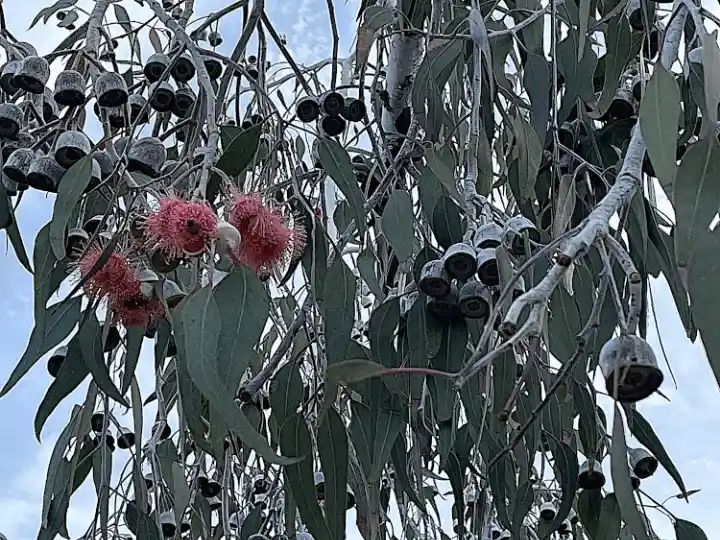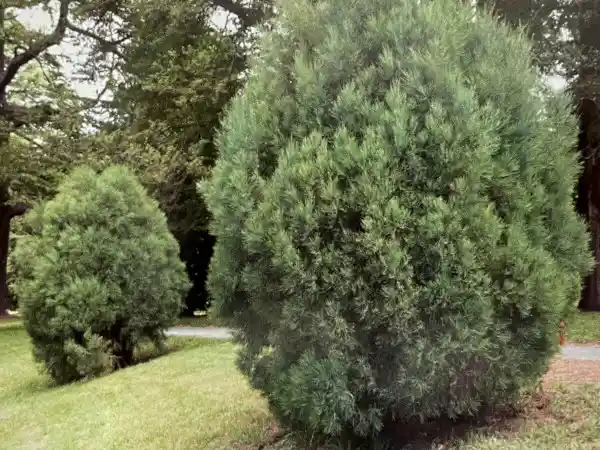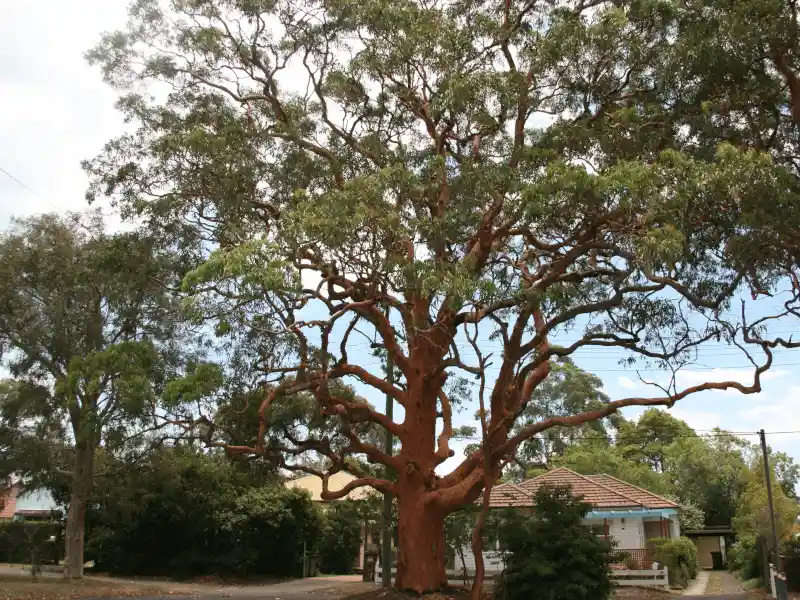
| Botanic name | Eucalyptus albida |
| Other names | White-leaved mallee |
| Main Origin | Southwestern Western Australia |
| Mature size | 3 – 5 m x 2 – 4 m (w x h) |
| Mature form | Shrub or small tree with a rounded canopy |
| Foliage | Round or heart-shaped silvery white (juvenile) Lance-shaped, glossy, olive or dark green (adult) |
| Growth rate | Medium |
| Position | Full sun |
| Soil | Prefers sandy or gravelly soils but adapts to other soils |
| Water | Minimal, infrequent deep watering during drought |
| Climate | Semi-arid, Mediterranean, warm temperate |
| Flower | Cream-white in spring and summer |
| Use | Feature tree, shrub, hedge, border, pot planting |
| Notes | Suitable for coastal sites |
IN THIS ARTICLE
Origin and distribution
Eucalyptus albida, known as White-leaved Mallee, is a highly popular eucalypt due to its unique aesthetic qualities. Native to the southwestern regions of Western Australia, it thrives in semi-arid to Mediterranean climates with hot dry summers and mild wet winters.
The species is found in heathlands, shrublands, and open woodlands, typically growing on sandy, gravelly, or lateritic soils, which are often nutrient-poor.
While naturally occurring in this specific geographic area, Eucalyptus albida has also been introduced to native gardens in other states. It is especially popular in floristry due to its fantastic juvenile foliage.

Growth and care
Eucalyptus albida naturally thrives on sandy or gravelly soils. It also adapts to other soil types, like loam or clay. It is a no-fuss, low-maintenance plant that can grow in nutrient-poor or degraded soils, so long as they are slightly acidic to neutral.
White-leaved Mallee prefers drier conditions and is sensitive to excess moisture, so good drainage is essential. Once established, it is highly drought-tolerant, making it highly suited to dry landscaping in hot, drought-prone regions.
With moderate salt tolerance, it is also ideal for coastal gardens.

Eucalyptus albida can withstand cold temperatures to -5°C but cannot survive in prolonged freezing conditions. While mature plants are reasonably frost-tolerant, young plants should be protected from heavy frosts.
At the time of planting, adding organic matter like compost can boost its growth if planted in sandy or poor soils. Mulching around the plant helps retain soil moisture and enhance soil fertility.
Young plants require infrequent deep watering during the first growing season. The watering can be gradually reduced until it is fully established. During the prolonged drought, occasional deep watering can help maintain lush growth.
White-leaved Mallee does not often require additional fertilisation. However, when planted in non-fertile soil or a container, the light application of a slow-release, balanced fertiliser in spring can maintain healthy growth.

Pruning Eucalyptus albida regularly helps maintain its shape and promotes healthy growth. Young trees, in particular, benefit from formative pruning to develop a strong, balanced structure. Pruning is best performed in late winter or spring.
When the trunk has developed over 5 cm in diameter, the young plant can be trained into a multi-stemmed bush through coppicing (hard pruning the plant to the ground) for maintaining striking juvenile leaves.
Alternatively, choose a central leader while the plant is young and prune away lower side branches, resulting in a tree form with a beautiful smooth trunk, branching structure and dense canopy.

Features
Eucalyptus albida is a multi-stemmed mallee or small tree that typically reaches a height of 2 – 4 metres, with a 2 – 5 metre spread.
Its bark is often powdery white or brownish grey with a smooth texture that gives the tree a clean and sleek appearance. Its attractive upright branches and dense canopy all contribute to its striking form.
The foliage of Eucalyptus albida is its most distinguished feature. Its juvenile leaves are stunningly silvery white, rounded or heart-shaped. They are developed in opposite pairs along branches and can persist as the plant matures.
In contrast, its adult foliage is narrow, long, lance-shaped, and dark green with an attractive silvery sheen.

Unlike other eucalypts, such as Eucalyptus cinerea, which forms intermediate leaves, Eucalyptus albida often develop mature leaves abruptly, resulting in an interesting mix of juvenile and adult foliage in a mature plant.
With hard pruning, the plant can be kept as a bush or hedge that retains stunning juvenile silvery white foliage. Trained as a small tree, it displays a fabulous tree form with a smooth trunk and magnificent dense canopy.
Creamy white flowers emerge in spring and summer. Small woody capsules follow.
As one of the miniature eucalyptus trees, Eucalyptus albida is well-suited to small gardens, patios, terraces, or container planting.


